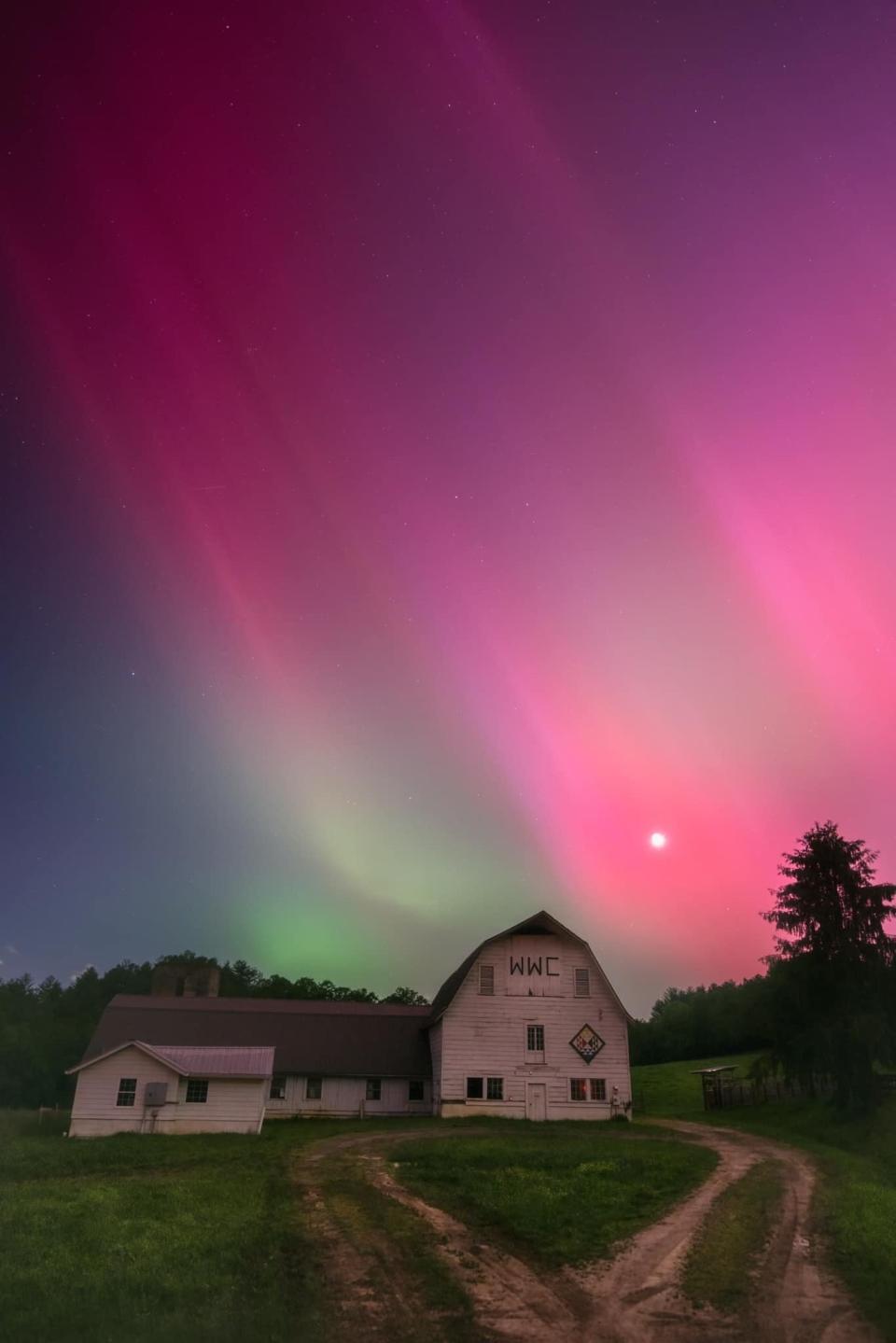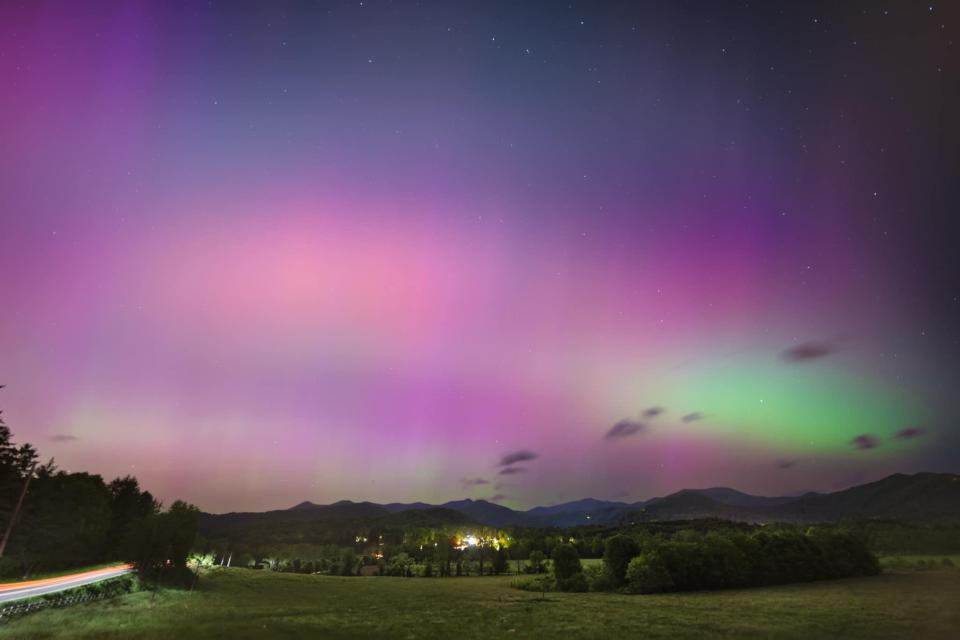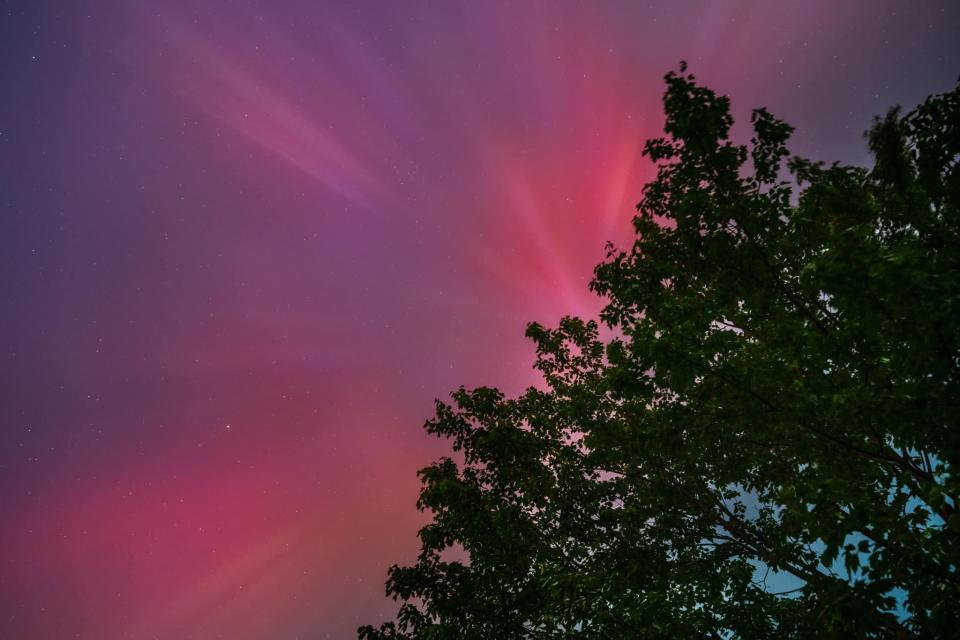Aurora borealis was dazzling. Will northern lights be visible in Asheville, NC again soon?
As photos spread of the stunning aurora borealis display that made a surprise appearance in Western North Carolina the weekend of May 10-11, many residents of the area are wondering whether they might have another chance to see the cosmic phenomenon.
Originally, the Citizen Times reported that the auroras were going to be visible largely in northern states, already a significantly farther reach than usual. Friday night, May 10, however, the geomagnetic storm responsible for the aurora was upgraded from G4 (severe) to G5 (extreme). USA TODAY reported that a G5 rating represents the best chances of seeing auroras over the greatest expanse of the Earth.

More: AVLFest 2024: Second wave music acts announced for citywide festival: What to know
Will there be more northern lights in NC?
Jake Wimberley, a meteorologist for the National Weather Service, said that the chance to spot auroras caused by this geomagnetic storm has unfortunately passed.
"The sunspots that produced the coronal mass ejections that caused the aurora, those are rotating as the sun rotates," Wimberley said. "So, they're rotating away from the Earth. Therefore, we're not expecting that they're going to be anything like what we saw Friday night for this event. I don't think there's any real possibility it's going to occur in North Carolina in the next day or two."

As for the future, it's hard to say whether we'll see more auroras in NC anytime soon. NOAA explained that CMEs are seen in higher numbers the closer the sun is to solar maximum, and current estimates say that the solar maximum could be somewhere between late 2024 and early 2026. However, scientists cannot determine whether we are at solar maximum until at least seven months after it occurs, and the occurrences and intensities of solar flares are difficult to predict.
Additionally, not all CMEs create auroras that are visible as far south as the ones visible in WNC May 10. In short, at this point all stargazers can do is wait, keep an eye on space weather predictions and hope for another of these rare opportunities.
More: Your guide to the week ahead – family fun for the week of May 10
What causes aurora borealis?

Auroras may look magical, but the explanation for the phenomenon is hard science. The displays form when particles flowing from the sun are caught in Earth's magnetic field. When these particles interact with molecules of atmospheric gases, the famous eerie green and rusty red become visible.
As stated by NOAA, CMEs that produce these particles are more common the closer the sun is to solar maximum, the point at which the sun undergoes the highest rate of activity in its cycle of roughly 11 years. The last solar maximum occurred in 2014.
More: Taking photos of the northern lights with your smartphone? Tips to get the best picture
Were northern lights visible to the naked eye in NC?

According to photos and experiences from viewers, the northern lights were visible to the naked eye May 10-11 in the Asheville area. Though previous reporting from the Citizen Times stated that the aurora would not be visible without enhancement, the storm upgrade provided the stunning surprise of visible northern lights in the night sky.
Photographer Jen Blake Fraser, who provided images of the northern lights in WNC, told the Citizen Times in an email that almost all of the photos she captured were also visible to the naked eye.
"It was mostly a faint glow and I could tell that it was red, pink or green," Fraser said. "Occasionally more brilliant streaks would appear. Some of those streaks moved and changed quickly, as if they were blowing in the wind."
Fraser also said that, as she photographed the northern lights on the Blue Ridge Parkway at an overlook near Craggy Gardens around 11 p.m. May 10, the crowd of onlookers she was a part of celebrated particularly bright movements in the aurora.
"At one point a series of streaks broke out and were moving and changing quite rapidly," Fraser said. "The sizable crowd gathered at the overlook was gasping and cheering as it happened. It was a fun experience and you definitely felt a sense of unity as we all watched in amazement."
All of Fraser's photos of the aurora and more of her work are available at on her Instagram @jenniferblakefraserphoto as well as her website, jenniferblakefraser.com.
Iris Seaton is the trending news reporter for the Asheville Citizen Times, part of the USA TODAY Network. Reach her at [email protected].
This article originally appeared on Asheville Citizen Times: Northern lights 2024: Will aurora borealis be visible again in NC?
